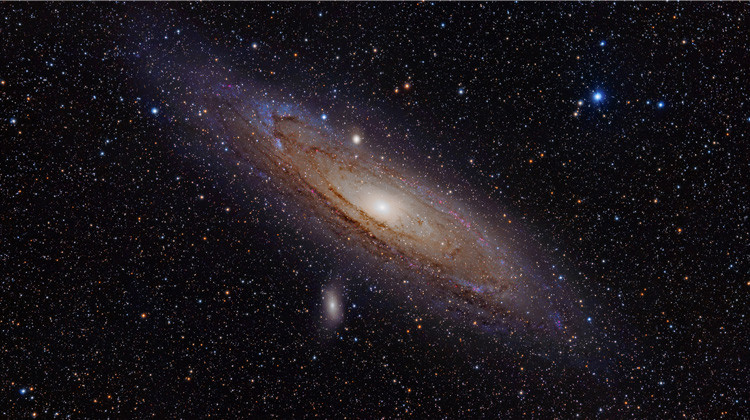Back to: Weekend Sky Report
Listen
Friday the 13th Micro Moon
September 13, 2019
The moon won't officially be full until early morning Saturday, but by most definitions, tonight will be a full moon. It's also Friday the 13th. This coincidence hasn't happened since 2006, and won't happen again for ANOTHER 13 years.
Moon and Saturn
September 6, 2019
Many people aren't even aware that the rings of Saturn are visible from Earth--much less from our own backyards with simple consumer telescopes.
Double Cluster
August 30, 2019
Tonight's target has been known since LONG before the telescope was invented. This of course means it can be seen WITHOUT a telescope, but ONLY under very dark skies. And it wasn't until the early 1800s that, THANKS to the telescope, it was identified as two separate clusters instead of one. The aptly named Double Cluster is a favorite among budding amateur astronomers. Not only because its brightness makes it easy to find, but also because its beauty keeps observers coming back. And here in the Northern Hemisphere, Double Cluster never dips below the horizon... so depending on your view, it's out all night! To find Double Cluster, look for Cassiopeia. You'll find it in the northeastern sky in the evening. The later you're out, the higher it will be... Cassiopeia looks like an elongated, oddly-proportioned "W." Once you find it, look for the two stars closest together in the constellation. If the "W" were on its side, as it will be tonight, it's the second and third stars from the bottom. Trace a line between those two stars, then scan down with binoculars or a telescope... following that same line. When you see a double cluster of stars, guess what... you've found it. Two brilliant clusters of mostly bluish white stars-but there are a few bright yellow and orange stars for variety. When you find it, you'll be looking at one of the younger star clusters you can easily find in the night sky... at only about 13 million years old. To give you an idea, Kangaroos evolved on Earth about two million years BEFORE these stars formed.
Andromeda Galaxy
August 23, 2019
Hiding in the northeastern sky this evening (August 23, 2019) is one of the most distant objects visible to the naked eye.
Rho Cassiopeiae
August 16, 2019
Hiding in the constellation Cassiopeia is one of the brightest stars of its kind we've ever found.
Scorpius
July 12, 2019
A good view of the southern sky tonight will show you a lethal predator... and a planetary rival.
 DONATE
DONATE










 Support WFYI. We can't do it without you.
Support WFYI. We can't do it without you.